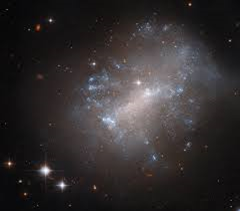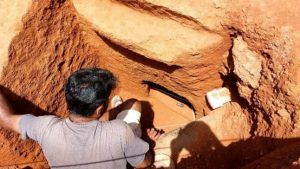Daily News Analysis.
Respiratory Syncytial Virus (RSV)
News: The first vaccination to shield babies from the Respiratory Syncytial Virus (RSV) has just been given FDA approval.
- A typical respiratory virus is the Respiratory Syncytial Virus (RSV). One of the most typical reasons for pediatric illness is RSV. Typically, it results in minor, cold-like symptoms.
- A more severe form of RSV can affect premature newborns, infants under six months old, seniors over 65, as well as those with weakened immune systems, chronic lung diseases, or congenital heart conditions.
- Pneumonia and bronchiolitis are brought on by a serious infection.
RSV transmits from one individual to another by
- Sneezing and coughing into the air;
- Direct contact, such as kissing a youngster with RSV on the face;
- Touching your lips, nose, or eyes after coming into contact with an infected object or surface without first washing your hands;
- The typical infectious period for an RSV infection is 3 to 8 days.
- However, the virus can occasionally persist in the environment for up to 4 weeks in newborns and persons with compromised immune systems.
RSV infection symptoms often appear 4 to 6 days after the infection. They consists of
- Blocked nose
- Reduction in appetite
- Cough
- Sneezing
- Fever
Irregular Galaxy : Image Captured By Hubble Space Telescope
News: A recent image of the irregular galaxy ESO 300-16, which is 28.7 million lightyears away in the southern constellation of Eridanus, was taken by the Hubble Space Telescope.
- A galaxy without a clear regular shape, such as an elliptical or spiral galaxy, is said to be irregular.
- Dwarf irregular galaxies 100 million times the mass of the Sun and massive ones weighing 10 billion solar masses are among them.
- They also have a lot of gas and dust in them. A galaxy can form irregularly in a variety of ways.
One might be the outcome of a galaxy collision, for instance.
- When this occurs, gravitational forces from various galaxies interact and result in an erratic spin.
- Young galaxies can also have irregular shapes, which indicates that they have not yet attained symmetrical rotation.
- Older and younger stars coexist often in irregular galaxies created by galactic interactions or mergers.
Space telescope Hubble
- After Edwin Hubble, the most prominent American astronomer of the 20th century, it was constructed under the direction of the National Aeronautics and Space Administration (NASA) of the United States.
- On April 25, 1990, the crew of the space shuttle Discovery launched the HST into an orbit 600 kilometres (370 miles) above Earth.
Megalithic Hat Stones : Discovered
News: The State Archaeology Department of Kerala has discovered a large number of megalithic “hat stones,” also known as Thoppikkallu in Malayalam, during an archaeological excavation.
During the megalithic era, hemispherical laterite stones known as “hat stones” were utilized as urn covers. This find is significant because it might represent the biggest hat stone find in the state at an exposed location.
Primary Findings
- During the pipeline work that sparked the excavation, the team discovered multiple megalithic burial sites and artefacts, including a distinctive rock-cut laterite burial chamber.
- This location produced a significant amount of earthen urns and unusual iron tools, revealing light on the lifestyle and culture of people who lived in the region more than 2,000 years ago.
- In contrast to the more frequent presence of burned bones, ashes were found inside the urns and beneath the hat stones.
- This suggests that this location has unusual funeral customs.
Archaeology
- The study of the past of humanity using tangible remnants is called archaeology. Any item that was made, altered, or used by people can be included in these remains.
- Artefacts are the traditional name for portable remnants. Tools, clothing, and decorations are examples of artifacts. Features are non-portable relics like post holes or pyramids.
- To understand how people lived in certain eras and locations, archaeologists use artifacts and features. They are interested in the day-to-day activities of these people, their political system, social interactions, and core values.
- Sometimes, the sole hints concerning a prehistoric group or civilization come from artifacts and features. We cannot read about prehistoric civilizations since they did not leave written records behind.
Demon Particle : Massless Particles
News: It may be possible to create superconductors that work at normal temperature thanks to the discovery of a massless particle, often known as a “demon particle,” by University of Illinois researchers.
- Currently, superconductors must operate at extremely low temperatures, frequently below 100 degrees Fahrenheit, in order to conduct electricity without resistance.
- The development of superconductors that operate at room temperature as a result of this recent finding has the potential to revolutionize many industries, including computing and medical imaging.
- While analyzing the characteristics of the metal strontium ruthenate, which resembles high-temperature superconductors, the scientists discovered the potential presence of the demon particle.
Demon’s Particle
- David Pines, a theoretical physicist, predicted the demon particle for the first time in 1956. Pines postulated that specific behavior would emerge in electrons moving through a material.
- Because it can live and generate plasmons (collective units of electrons) at room temperature, where larger particles wouldn’t ordinarily be able to, this specific particle is intriguing.
Floodwatch : Mobile App
News: ‘Floodwatch’ is a mobile application that was released by the Central Water Commission.
Floodwatch
- The Central Water Commission (CWC) launched it and released in 2023.
- Objectives: Using mobile phones, update the public in real-time about the flood situation and forecasts out to seven days.
- CWC: Jal Shakti Ministry is the founding ministry.
- Head: Chairman who serves as the Government of India’s Ex-Officio Secretary.
- Admin center: New Delhi.
- It is an associated office of the Department of Water Resources, River Development, and Ganga Rejuvenation in the Ministry of Jal Shakti.
- It is charged with the general duties of creating, coordinating, and advancing plans for the management, conservation, and utilization of water resources across the nation in conjunction with the relevant State Governments.
- Additionally, it carries out any necessary research, development, and execution of any such plans.









